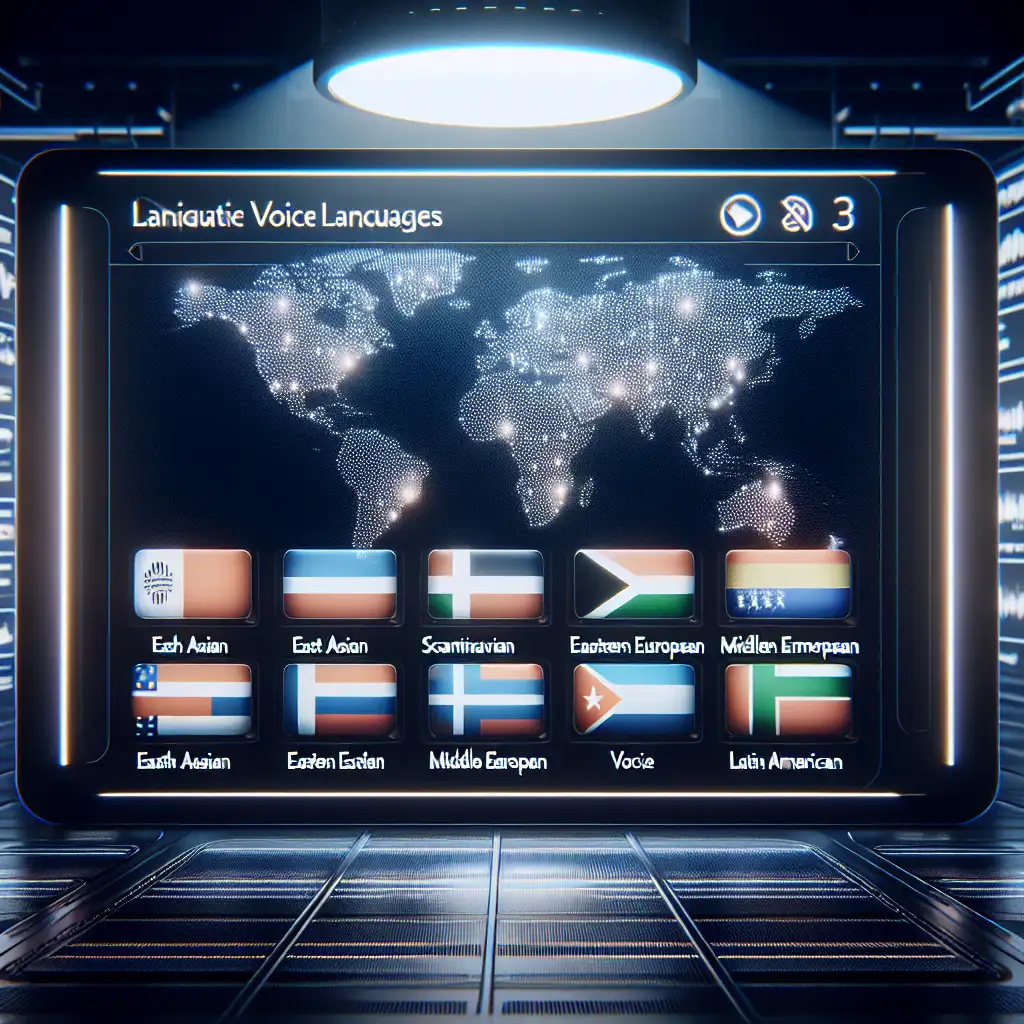Maximizing User Engagement by Choosing the Right Google Cloud Text-to-Speech Language
When integrating voice technology into your applications, developers often gravitate toward default or widely-used languages, aiming for quick deployment. However, if you want to truly maximize user engagement and accessibility, it’s crucial to look beyond the basics—specifically when selecting languages and voice options in Google Cloud Text-to-Speech (TTS). Doing so can elevate your app's communication effectiveness, delivering personalized and culturally aware experiences that resonate deeply with diverse audiences.
Why Language and Voice Selection Matters
Google Cloud Text-to-Speech supports over 220 voices across more than 40 languages and variants. Choosing the right language isn't just about matching the user’s primary tongue—it influences:
- Accessibility: Ensures users with varying dialects or regional accents feel understood.
- User Experience: A natural and relatable voice minimizes cognitive load and frustration.
- Brand Voice Consistency: Aligns speech tone and style with your brand’s personality.
- Engagement: Culturally appropriate voices capture attention better and foster trust.
Ignoring these elements can make users disengage or feel alienated, especially in applications like e-learning, customer support chatbots, or content narration.
Step-by-Step Guide: Selecting the Appropriate Language in Google Cloud TTS
1. Understand Your User Base
Start by analyzing your audience demographics:
- Which countries or regions predominantly use your app?
- What dialects or accents do they speak?
- Are there multilingual users who switch languages often?
For example, if you have a strong user base in Mexico, choosing es-MX (Spanish - Mexico) instead of generic es-US might better resonate with local preferences.
2. Explore Available Voices and Variants
Use the Google Cloud Text-to-Speech documentation or API to list supported voices:
gcloud ml speech voices list
Or programmatically via client libraries (Python example):
from google.cloud import texttospeech
client = texttospeech.TextToSpeechClient()
voices = client.list_voices()
for voice in voices.voices:
print(f"Name: {voice.name}, Language Codes: {voice.language_codes}, Gender: {voice.ssml_gender}")
Look out for:
- Regional language codes (e.g., en-US vs. en-GB vs. en-AU).
- Voices that match your brand tone—friendly, formal, energetic.
3. Test Voice Samples for Naturalness and Clarity
It’s essential to audition voices before committing:
synthesis_input = texttospeech.SynthesisInput(text="Hello! Welcome to our app.")
voice_params = texttospeech.VoiceSelectionParams(
language_code="en-GB",
name="en-GB-Wavenet-A",
ssml_gender=texttospeech.SsmlVoiceGender.FEMALE,
)
audio_config = texttospeech.AudioConfig(
audio_encoding=texttospeech.AudioEncoding.MP3
)
response = client.synthesize_speech(
input=synthesis_input,
voice=voice_params,
audio_config=audio_config,
)
with open("output_en_gb.mp3", "wb") as out:
out.write(response.audio_content)
print("Audio content written to file 'output_en_gb.mp3'")
Compare output files from different language variants to judge which feels more aligned with your user needs.
4. Implement Dynamic Language Detection (If Needed)
If your application serves a multilingual audience:
- Build logic to detect user language automatically.
- Programmatically choose TTS language/voice based on detected preferences.
For instance, a travel assistant app may welcome a French tourist with fr-FR-Wavenet-D voice but switch to en-US-Wavenet-C for an American visitor.
5. Consider Pronunciation and Localization Tweaks
Google Cloud TTS also supports SSML (Speech Synthesis Markup Language). Use it to:
- Add phonetic spelling for unusual names or local terms.
- Insert pauses and intonation marks for clarity.
Example SSML snippet for better pronunciation:
<speak>
Welcome to <say-as interpret-as="spell-out">NYC</say-as>!
</speak>
Passing this snippet into your synthesis request improves comprehension among users familiar with specific acronyms or jargon.
Real-Life Example: Enhancing an E-Learning Platform
Imagine you run an e-learning app serving Spanish speakers across Spain (es-ES), Mexico (es-MX), and Argentina (es-AR). Instead of deploying a one-size-fits-all es voice, you choose regional voices like es-ES-Wavenet-B, es-MX-Wavenet-D, and es-AR-Wavenet-C. Each variation pronounces certain words differently, uses subtle accent changes, making lessons sound native rather than robotic “foreign language” speech.
User feedback highlights higher satisfaction scores because learners feel personally connected—not like they're listening to generic machine speech from some faraway place.
Final Tips for Maximizing Engagement Through Language Choice
- Don’t default blindly — Explore all available options before settling on a single voice.
- Prioritize clarity over novelty — A natural but clear accent trumps an exotic-sounding but hard-to-understand voice.
- Use SSML for fine-tuning — Even the best voices sometimes need pronunciation corrections or pacing refinements.
- Keep evolving — Regularly revisit supported voices as Google frequently adds new languages and improvements.
Conclusion
Choosing the right language—and not just the obvious one—in Google Cloud Text-to-Speech is a surprisingly impactful way to boost accessibility, demonstrate cultural respect, and deepen user engagement across global applications. By thoughtfully selecting voices tailored to your audiences’ linguistic preferences and leveraging features like SSML, you transform plain TTS into a powerful communication tool that users appreciate—and keep coming back for.
Want a hands-on example or advice tailored specifically to your project? Drop a comment below! I’m happy to help you navigate Google Cloud TTS’s rich ecosystem for maximum impact.
